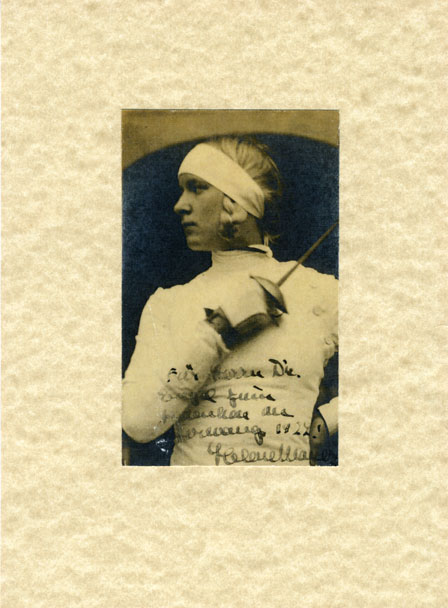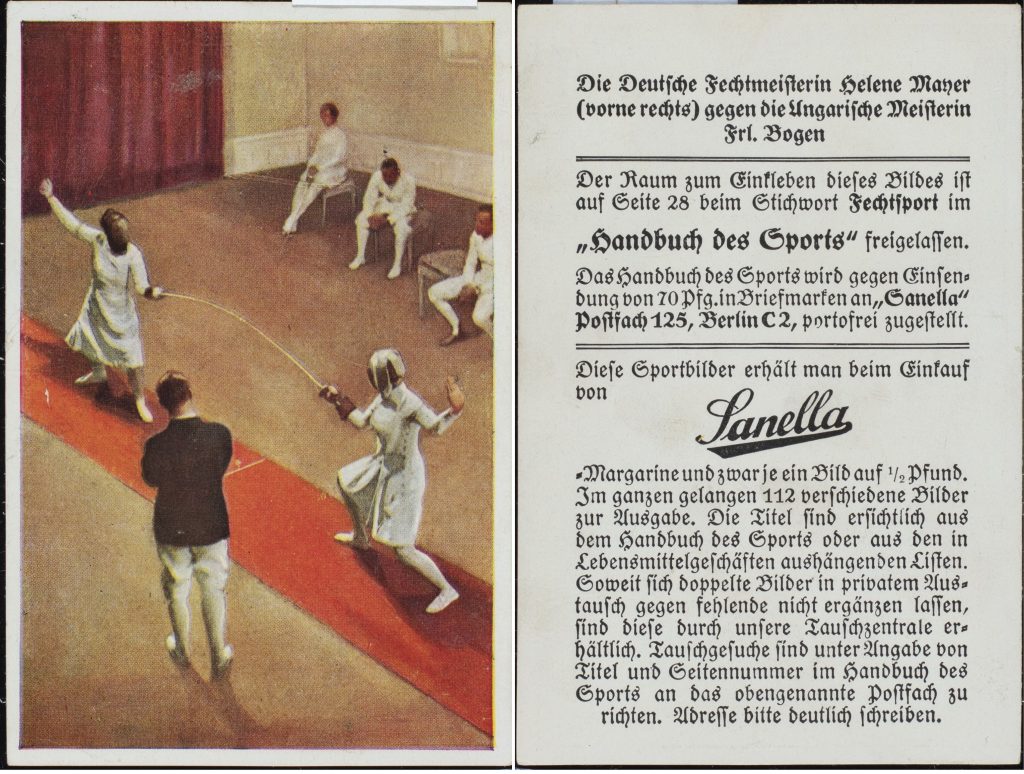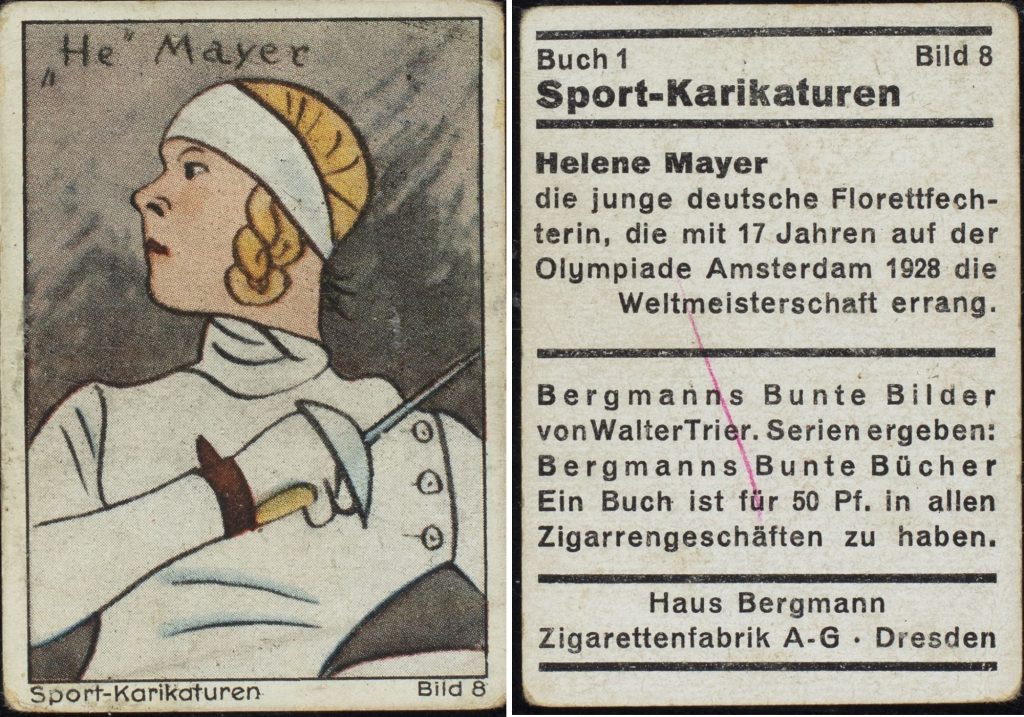By Bear Smith, Reference Services Librarian
Helene Mayer, Nazi Germany’s Jewish Olympian
The 1936 Summer Olympics were, famously, held in Berlin while Germany was under Nazi rule. The Games had not been awarded to the Nazis, though. The International Olympic Committee had awarded the games to Germany in 1931, two years before Hitler’s rise to chancellor and the eventual Nazi takeover of the country. At that time, in 1931, awarding the games to Germany was seen as a two-fold opportunity for the then-ruling Weimar Republic. It was hoped that it would be a positive re-introduction of Germany onto the global political stage after WWI, as well as an economic boost for the German economy that struggled under the Treaty of Versailles.
As the Nazi Party took over, however, and countries became aware of their discriminatory practices, international participation in the Olympic Games started to come into question. In the United States, sports organizations and trade unions were speaking out about the possibility of a boycott of the 1936 games. In 1933, the Amateur Athletic Union of the United States, which supervises tryouts for Olympic competitors, voted not to send a team if Jews were to be discriminated against in the German Olympics. The International Olympic Committee asked for assurances from the Olympic Organizing Committee of Berlin that German Jews would not suffer discrimination and would be permitted to try out for the German team. As a concession to the mounting political pressure, the Nazis placed twenty Jewish athletes in training for the Olympics. Only one of them would actually compete for Germany – Helene Mayer.

Several items in the collections of the Leo Baeck Institute bear witness to the remarkable trajectory of this talented athlete, who has been called the greatest female fencer of all time and was named one of the top 100 female athletes of the 20th century by Sports Illustrated. Above is a 1928 autographed portrait of Helene Mayer, who at that time was already a star. In 1924, at 13 years of age, she won German’s national foil fencing. She proceeded to win the national championship for the next six years in a row. At the 1928 Summer Olympics in Amsterdam, she took gold. While she competed for Germany in the 1932 Olympic Games in Los Angeles, she learned hours before her match that her boyfriend had died in a military training exercise; she placed 5th in the competition. She then stayed in the United States after the Olympics as an exchange student.

The trading card above, shown front and back, was published by Sanella, a German margarine company, and was made in honor of the 1932 Olympics. Helene Mayer is visible on the right during a match as the judge looks on. The text on the back of the card indicates that this is number 28 in a series of trading cards featuring Olympic athletes. (The Leo Baeck Institute also holds trading cards that celebrate Helene Mayer’s 1928 Olympic performance, as well as cards celebrating other German Olympians.)

The 1932 cigarette trading card seen above sports an illustration of Mayer that highlights her blonde hair and distinctive braid, which was a celebrated aspect of her persona. (At this time, cigarette companies often stiffened their packages with collectible cards depicting popular actors, athletes, and other luminaries.) The back of the card describes Mayer’s achievements in the 1928 Olympics and provides the name of the illustrator, Walter Trier, along with information about the cigarette manufacturer.
Helene Mayer was the daughter of a successful Jewish family from Frankfurt. Her grandfather, Martin, rose to business and political prominence in the city in the 1870s after Jews were granted full civic rights in Germany and Jewish assimilation into German society became de rigueur. Her father, Ludwig, was a physician. Helene’s Jewish ancestry was undeniable.
It was also unmentionable in 1936. By the time of the 1936 Summer Olympics, the Nazis had taken control of Germany, and their racist theories were fully established. Mayer’s citizenship had been rescinded by the Nazi’s Nuremberg Laws while she was studying in the United States. So how did Helene Mayer become the sole Jewish representative of Germany in the Berlin games?
While Helene Mayer left little historical record, what is known from her contemporaries is that Mayer did not consider herself Jewish. Her father was Jewish, but her mother was a Christian, and Helene did not appear to identify with either side. It was said that her primary concern was being a successful athlete and that preoccupation may have blinded her to the Nazi racism. It was also supposed that Mayer saw Olympic glory as an opportunity to reclaim her German citizenship.
Whatever her reasons, Helene Mayer did represent Germany in the 1936 Olympic Games, placing second, earning the silver medal, and as all German athletes were required to do in Berlin that year, gave the Nazi salute. It should be noted that for all of Hitler’s claims of racial superiority, the gold medal went to the Hungarian Ilona Elek… also half-Jewish.


